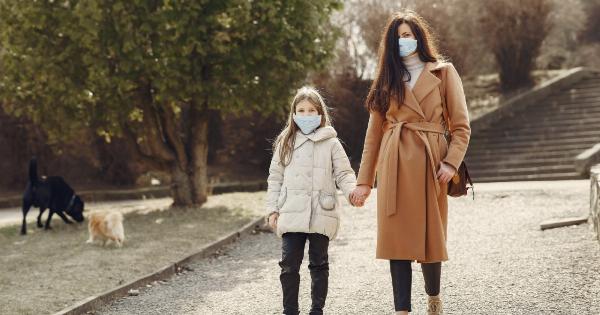Our health is influenced by various factors such as our lifestyle choices, genetics, and the environment we live in. While we can fall ill at any time of the year, certain seasons tend to be associated with a higher likelihood of getting sick.
In this article, we will explore the different times of the year when we are most prone to getting sick and discuss some reasons behind these patterns.
Winter: The Cold and Flu Season
Winter is undoubtedly a season that sees a rise in illnesses, particularly respiratory conditions such as colds and the flu. The primary reason behind this is the prevalence of viral infections that thrive in cold weather.
Additionally, during winter, people tend to spend more time indoors in close proximity to others, increasing the chances of viral transmission. The dry air during winter also makes it easier for viruses to survive and spread.
Spring: Allergies and Seasonal Changes
Spring brings vibrant blooms and warmer weather, but for many, it also brings a host of allergies. The increase in pollen and other allergens during this season can trigger allergic reactions in susceptible individuals.
Symptoms may include sneezing, itchy eyes, runny nose, and congestion. Additionally, the changing weather patterns in spring can also weaken our immune system, making us more vulnerable to infections.
Summer: Foodborne Illnesses and Insect Bites
While summer is often seen as a season of fun and relaxation, it still carries its health risks. Foodborne illnesses are more common during this time due to the hot and humid weather, which creates a favorable environment for the growth of bacteria.
Improper food handling and storage can further increase the risk of illness. Furthermore, summer also brings an increase in insect activity, leading to a greater likelihood of bites and related infections.
Fall: Respiratory Infections and Back-to-School Season
The fall season is characterized by cooler temperatures and the return of children to school. As kids congregate in classrooms and interact with each other, respiratory infections such as the common cold and strep throat tend to spread more easily.
The changing weather conditions, with fluctuating temperatures, can also weaken immune responses, making individuals more susceptible to illnesses.
Seasonal Vaccinations: Protection against Illnesses
While each season poses its own health risks, preventive measures can help reduce the likelihood of falling sick. Vaccinations play a crucial role in protecting individuals from diseases prevalent during specific times of the year.
For example, getting a flu shot before the onset of winter can help safeguard against the influenza virus. Additionally, practicing good hygiene, such as handwashing and avoiding close contact with infected individuals, can further protect against various illnesses.
Boosting Immunity: Year-Round Strategies
Regardless of the season, maintaining a strong immune system is key to staying healthy.
Engaging in regular physical activity, consuming a nutritious diet rich in fruits and vegetables, getting enough sleep, and managing stress all contribute to optimal immune function. At any time of the year, these lifestyle factors play a vital role in minimizing the risk of falling ill.
Conclusion
While the likelihood of getting sick varies throughout the year, it is important to remember that illness can strike at any time.
By understanding the seasonal patterns of certain diseases and taking appropriate preventive measures, we can minimize our risk of falling ill. Furthermore, adopting healthy lifestyle choices that boost immune function ensures our bodies are equipped to fight off illnesses year-round.


























